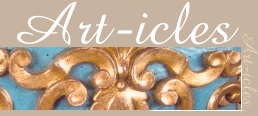      
|

Florence and Tuscany - The 18th century (date : 31 August 2001), from Agathe Parenty Following the 1738 treaty of Vienna, Francois III of Lorraine, husband of Marie-Therese of Austria, gained the grand duchy of Tuscany. However, it was not until 1765 that a member of the royal family Pierre Leopold (1747-1792) established himself there. In choosing very capable advisors he brought a new lease of life to the institutions and the economy of Tuscany. Furniture making also benefited from his government and it was during the redecoration of the Pitti Palace that the classic taste took firm root in Tuscany. The Florentine rococo style was not very important. It continued to be marked by decorative elements from the renaissance in its garlands of flowers and trophies. There was one ornamental invention, however, which was very widespread - the use of the mascaron (grotesque mask) in the form of a bat. Equally, the use of the fleur de Lys from the town's coat of arms or a feather on the pierced backs of chairs often signal their origin. The furniture which has survived to today shows remarkable craftsmanship and, furthermore, its structure reveals knowledge of English and French models. Elsewhere, the manufactory of Grand Duke Ferdinand 1st (1588) continued to produce pieces of furniture in pietra dura or in precious marble, especially for export. To compete with this very expensive technique, Enrico Hugford, Abbott of Vallombreuse (1695 - 1770) improved the scagliata method by using a plaster base. The objective of this process was to imitate the brilliance of the stone. Assisted by his students: Torello Mznnini, Pietro Belloni and Lamberto Cristiano Gori (1730 - 1801) he produced marquetry sometimes as beautiful as those in marble. |
  |
|||
|
|||||